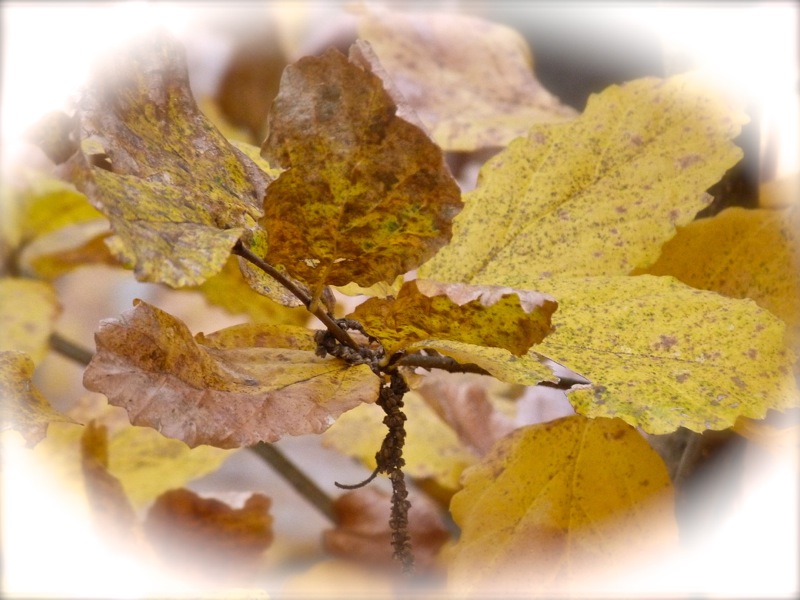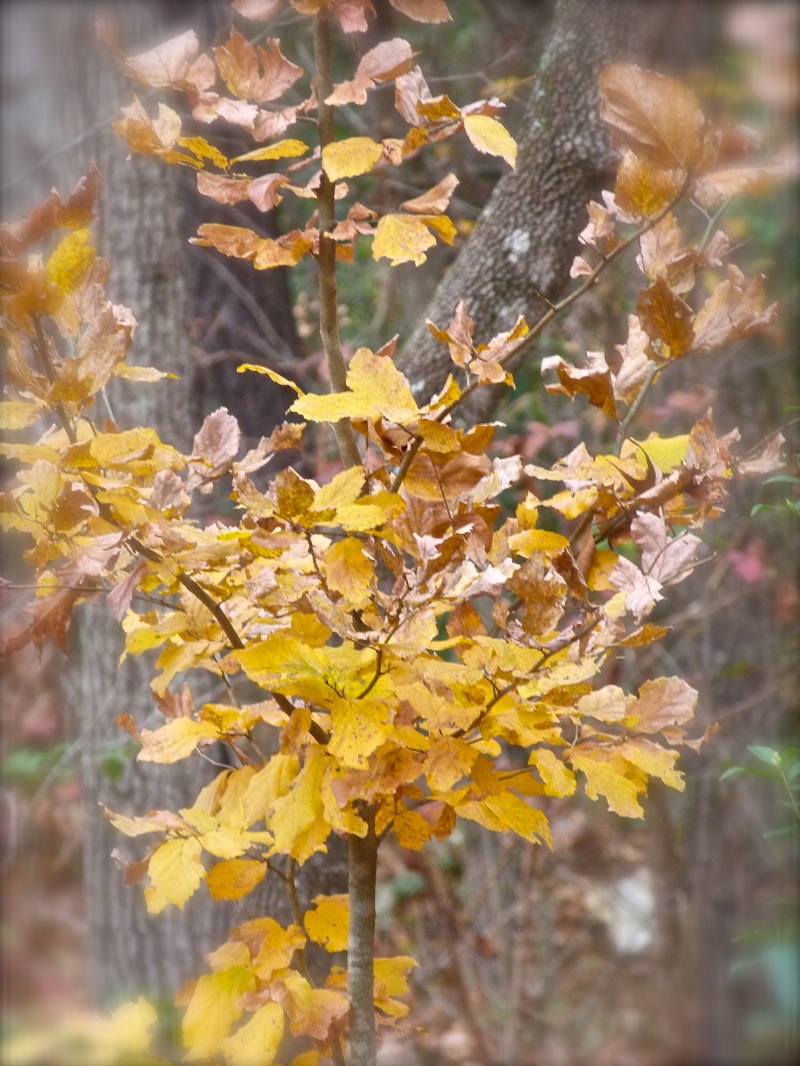Beautiful Fall, Despite It All
 Friday, November 25, 2016 at 9:45PM
Friday, November 25, 2016 at 9:45PM There is moisture out there. This morning the sky was filled with low clouds and the air hung damp over the earth. But as the day progressed, the clouds lifted and blue sky appeared. We had about ten minutes of rain one day last week, but the drought continues. 46 out of 67 counties in Alabama are suffering emergency level drought conditions, including where I live. We have a chance of rain several days next week, with 80% chance on Wednesday. I am hopeful!
Despite the drought, fall colors this week have been beautiful, and one day I took a walk to see the foliage in neighboring yards.  This gorgeous tree is located on a neighbor's property.I am surprised that not all leaves have simply shriveled and turned brown before falling. Plenty of them have, and autumn colors are more antique than vibrant. But Japanese maples and other acers, dogwoods, hickory trees, and crape myrtles (Lagerstroemias), as well as various shrubs are putting on a show.
This gorgeous tree is located on a neighbor's property.I am surprised that not all leaves have simply shriveled and turned brown before falling. Plenty of them have, and autumn colors are more antique than vibrant. But Japanese maples and other acers, dogwoods, hickory trees, and crape myrtles (Lagerstroemias), as well as various shrubs are putting on a show.  Molten leaves fall to the ground next to the road leading to my house.
Molten leaves fall to the ground next to the road leading to my house.
In my own garden, colors have peaked. Here are images taken this week:
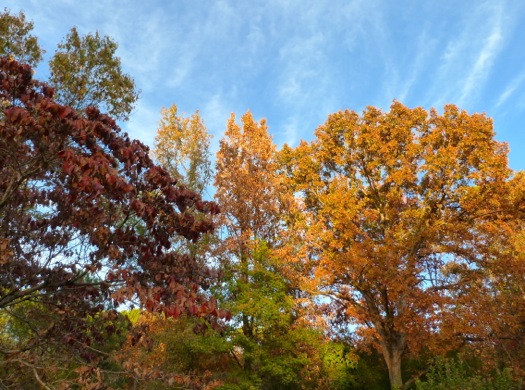

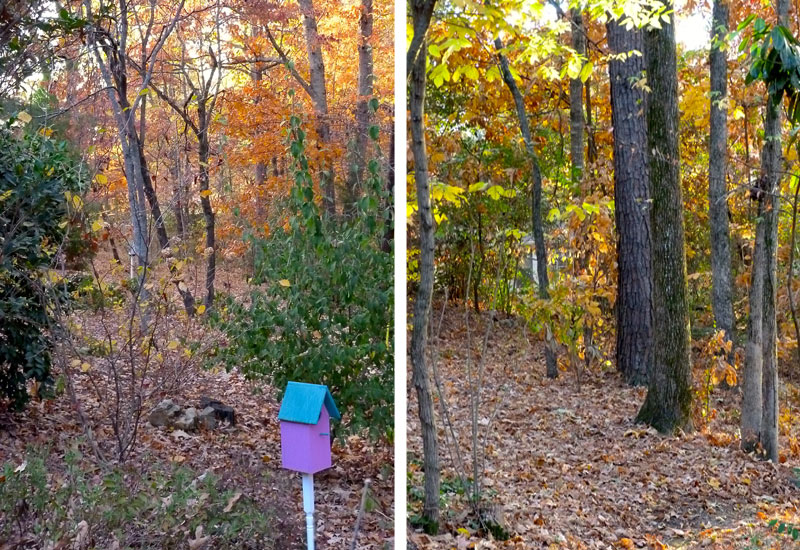

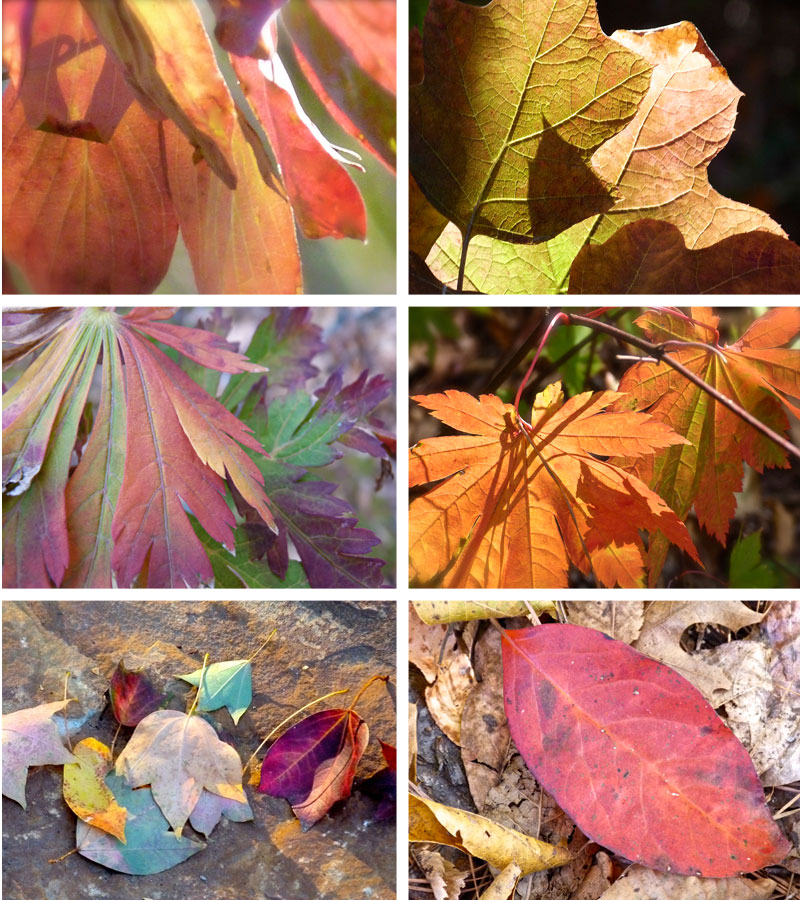

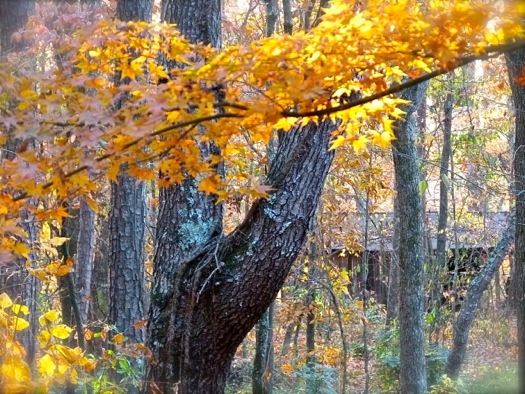
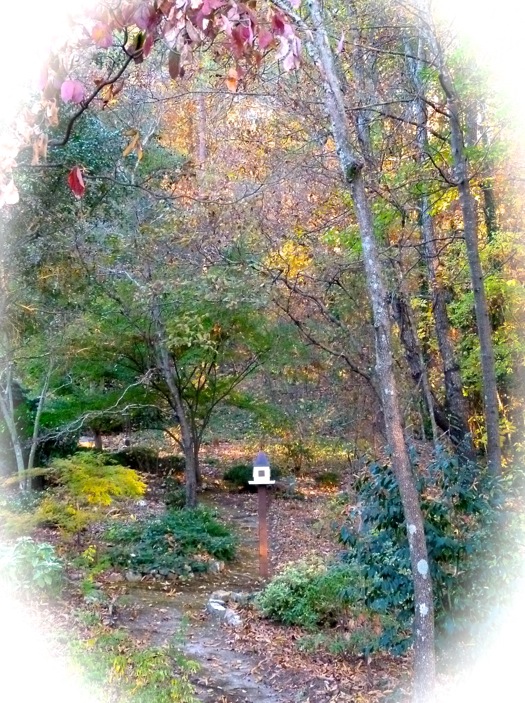
The first good rain will surely strip the trees and leave a deep sea of leaves covering the ground. When that happens, I will be outside rejoicing.
 drought,
drought,  fall colors,
fall colors,  fall foliage,
fall foliage,  trees for fall foliage in
trees for fall foliage in  fall,
fall,  fall garden,
fall garden,  foliage,
foliage,  weather
weather 